The construction of a house with an architect is a long-term project that typically spans several months or years. It takes place in successive and sometimes concomitant phases from the acquisition of a buildable land lot to the delivery of the house, through the design and the delicate phase of the construction works.
This articles presents the different phases for the specific case of the design and construction of houses. A detailed presentation of the more general case can be found in the steps for the design and construction of buildings.
1. Acquisition of a land lot and financing
Before the construction of a house, the owner must conduct a phase of exploration to find a buildable land lot and the necessary financing.
In order to build a house, three conditions must usually be completed:
- Owning a plot of land or the rights to use it, and having ensured its buildability. Usually the buildability of a land lot must verified by obtaining a certificate of urban planning from the relevant authorities.
- Obtaining the necessary funds – bank loans, personal contributions, aid, etc. – for:
- The purchase of the land and its possible connections to the different networks of roads and utilities (water, sewage, electricity, telecommunications).
- The construction of the house: purchase of all materials and payments of the contractors in charge of each specialty (masonry, roof, plumbing, electricity…).
- The payment of the fees of the different specialists who will intervene – architect, notary, geometer, etc.
- Obtaining the building permit, which, depending on the country and the region, may be submitted to certain conditions relative to the size of the house, terrain, desired design, etc.
The land lot must obviously be chosen wisely, according to the owner’s needs, his budget and the price of the land in the selected area. If possible, it is strongly advised to sign pre-contracts for the acquisition of the land and the obtaining of loans with suspensive clauses in order to prevent any impossibility of fulfilling one of these conditions which would prevent the realization of the project.
Beyond the simple execution of the mandatory plans to obtain the building permit, the architect may also offer his services as construction project manager. By contracting the services of an architect throughout the project, both for the design and supervision of the site, the whole construction project for a house is usually facilitated and accelerated, and it also often benefits from a reduction in the overall cost of the works.
2. Preliminary draft: sketch, budget and building permit
The architect designs the house in dialogue with his client, according to his wishes and budget, taking into account the conditions of the plot of land (shape, orientation, climate …) and local urban planning rules, to design detailed plans that will form the heart of the application dossier for a building permit.
During the first design phase, the architect prepares a crude preliminary draft which regroups the following pieces:
- A site plan: setting of the house in the entire land lot
- A crude plan of the house
- The surface of the various rooms and parts of the house
- An explanatory note of the project
- A first estimate of the total cost of the house
Following the submission of this first study, the architect works in constant dialogue to the project owner to integrate his wishes and modifications and propose a sketch study, in order to reach an agreement on detailed plans that constitute the detailed preliminary draft. Though the exact details may change from country to country, this final draft, which specifies the insertion of the house into its environment, the structure of the spaces inside, its appearance and access, usually contains the following documents:
- Plan of integration of the house in the site
- Site plan
- Plans of facades with details of doors and windows
- Plans of the different levels
- Explanatory notes providing further details on:
- Building materials, roofing, cladding and colors
- The built areas of the house and the different rooms
- The overall cost estimate of the works
The final draft will be the base upon which the architect will constitute the application dossier for a building permit, with the contribution of the technical, administrative and legal documents required by the local authorities. The exact pieces required may vary between countries and cities, but they usually include:
- The identity as the project owner, as the one who orders the construction
- The identity of the owner of the land lot, if he is different from the project owner
- The identity of the architect
- The legal status and size of the land lot
- The authorization to cut trees and clear the vegetation if needed
- The planned methods of financing
Following the submission of the application dossier for a building permit, the architect follows its instructions and assists the client to recover the documents or information required by the services involved in order to obtain the building permit in the shortest time possible.
3. Detailed design and selection of contractors
As soon as the building permit is received, the architect will carry out the detailed design of the entire house and the plans required for the completion of each of its parts. He clearly defines the different lots for consultation of the contractors of each specialty:
- Plans, sections and elevations necessary for the proper understanding of the whole project and the intervention of each specialist
- A detailed quotation which describes all the operations to be carried out by each specialty and the corresponding costs
- An indicative plan for the execution of the different works for each specialty
The companies chosen, following the suggestions of the architect, will propose their offers to fulfill each of the construction missions that fall within their specialty. The project owner selects the contractors that will participate in the construction, with the architect’s advice and according to the owner’s budget and the offers of the contractors.
The architect’s duty guarantees that he will ascertain that each company has the skills and necessary guarantees for the complete realization of their lot and that he will study the appropriateness of the quotations proposed in relation with the services requested, to guarantee the selection of the most judicious companies in the project owner’s best interests.
Depending on the type of intervention of the selected construction companies, different contracts are signed which define:
- The nature and extent of each intervention
- A descriptive specification and detailed plans of execution by specialty
- Insurance for professional liability of the contractors
- The prices inclusive of VAT and the index of possible price revisions
- A schedule for the execution of the works for each specialty
- A precise schedule of payments according to the progress of each lot
- The expected starting and finishing dates for each lot and the penalties for delays
- The time required to carry out repairs of potential defects upon reception the house
- The 5% annual guarantee, paid one year after receipt of the work to guarantee the repair of defects not detected at the reception
- The damage insurance to guarantee the owner against faulty workmanship
The works can then start, under the general direction of the project manager who is generally also the architect. As the “main contractor” or “prime contractor”, he will supervise the entire works, regularly inspect the construction site on behalf of the owner and keep him regularly informed of the operations and payments to be made to each company according to the state of progress of their works.
4. The construction site
The beginning of the construction site marks the beginning of the actual construction of a house. It consists of two main categories of work: the structural works gathering construction for the structure and the solidity of the house, and the secondary works that regroup the functions necessary for the comfort of the house and its daily use by the inhabitants.
Here are the photos of the entire progress of a construction site for a city house to illustrate the various stages of the construction, from the demolition of the previous structure to the finalization of the new one. This original house relies upon the use of usual and economical building materials and the highlights of wood as decoration material in contrast to a gray coating of the original shape of the house.
Structural works
Structural works involve the construction of the structural elements of the house, its anchorage in the ground, the solidity of the walls and the roof. They take place in a series of interventions of four major specialties, from floor to roof.
Earthworks
Preparation of the ground to build a suitable construction platform, leveling and digging excavations, trenches that will welcome the foundations. The earthwork is accompanied by possible drainage if there is a significant presence of water in the soil, especially for houses with a basement or a crawl space.
Demolition of the existing house
The land on which the house was built was previously occupied by a small town house. It had to be demolished in order to leave room for the construction of a new, more spacious and modern house.
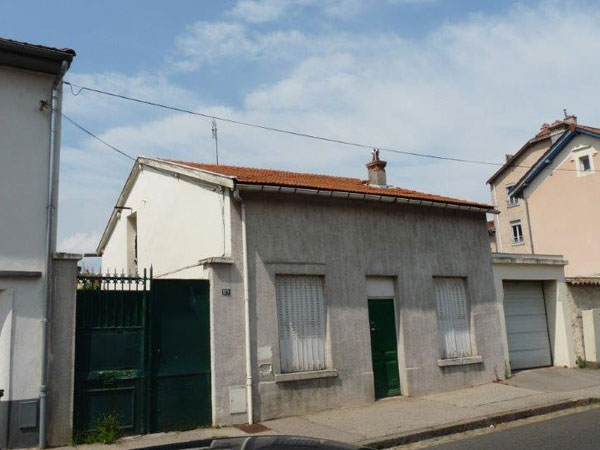

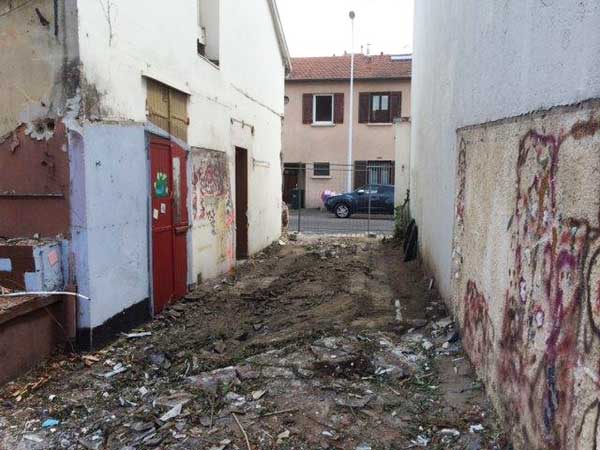
Foundations
Installation in excavations of steel reinforcements and casting of concrete which constitute the foundations of reinforced concrete. The depth of the foundations depends on the quality and stability of the soil; the more unstable the soil the deeper foundations have to be built.
A cellar in the basement existed previously in the old house, it is preserved before pouring the concrete slab on which the new construction will be based.

Masonry
Casting of a concrete slab (often reinforced) on the ground floor or in the basement, with insulation or a floor heating if necessary. Realization of exterior walls, and possibly some supporting interior walls usually with concrete blocks assembled with mortar, and providing space for doors and windows.
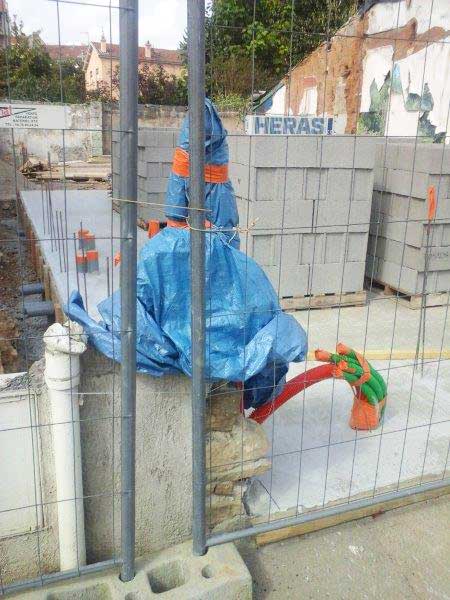
The construction of the walls that form the structure of the house relies upon the use of blocks of concretes. This 3-storey house is characterized by large bay windows creating vast openings on the garden, and an attic space in an original living space.
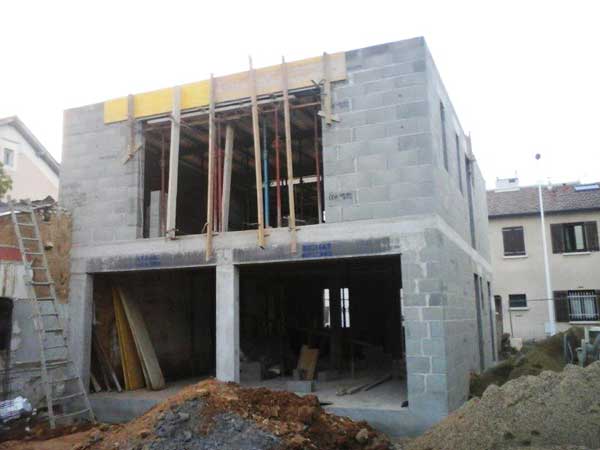
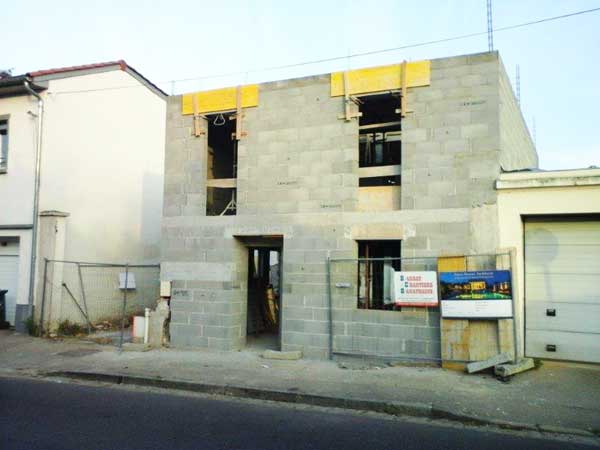
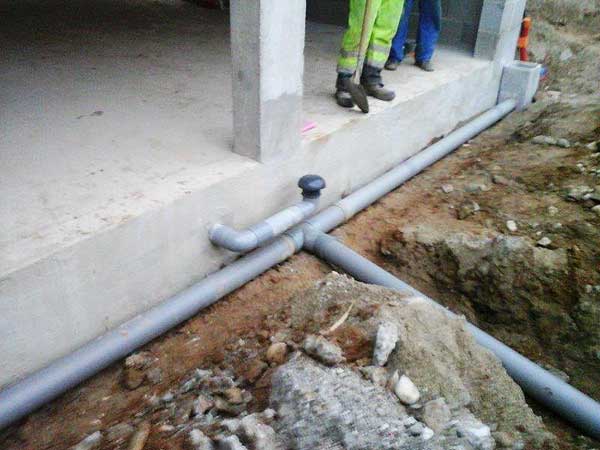
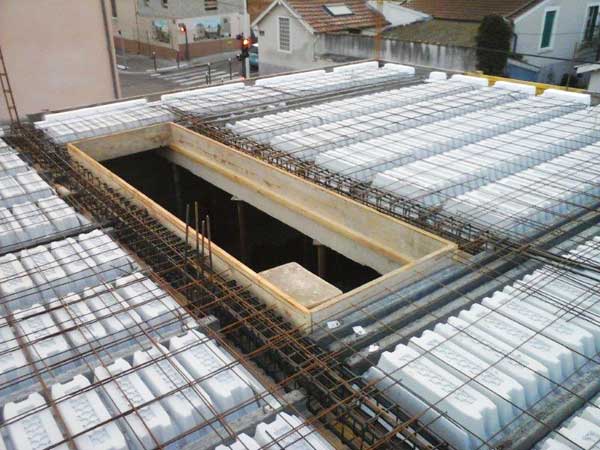

Carpentry
Laying of the frame that will support the roof.
The roof frame is designed to allow the beams to appear inside the upper part of the house and let it appear “organic”.
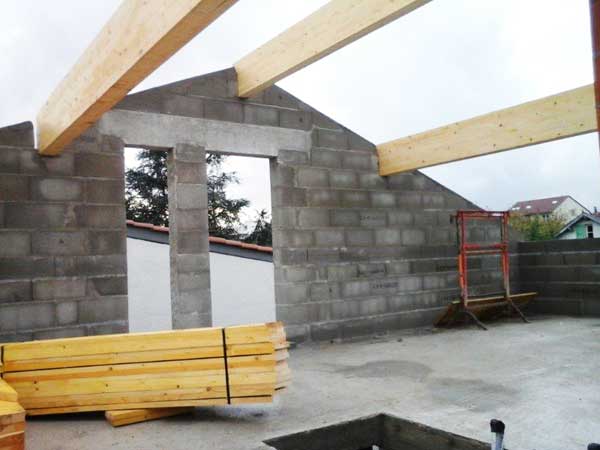
Secondary works
The secondary works involve the implementation of the various elements of interior fittings and finishes for aesthetics and comfort for the daily life of the inhabitants. Certain secondary works can sometimes be conducted at the same time.
Covering
Laying roof tiles, slates or other roofing materials, for protection against the weather, as well as gutters and water descent. The house is called “weather tight” when the cover and its waterproofing are finished.
Outside the goal for this house is to create a modern look that brings out the natural beauty of the wood.
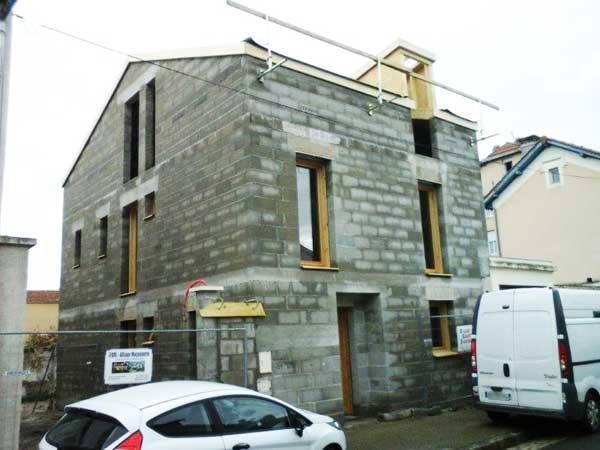
Joineries
Inner and outer insulation, and plastering: installation of the metal frames that support the partitions. Installation of thermal or sound insulation on walls and ceilings, possibly covered with plaster boards to provide support for painting, installation of under ceilings. This part is eventually synchronized with the roofing work. The house is called “air tight” once the doors and windows are installed.
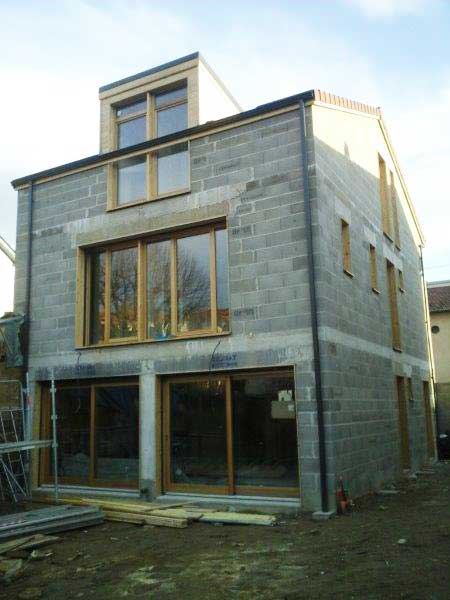
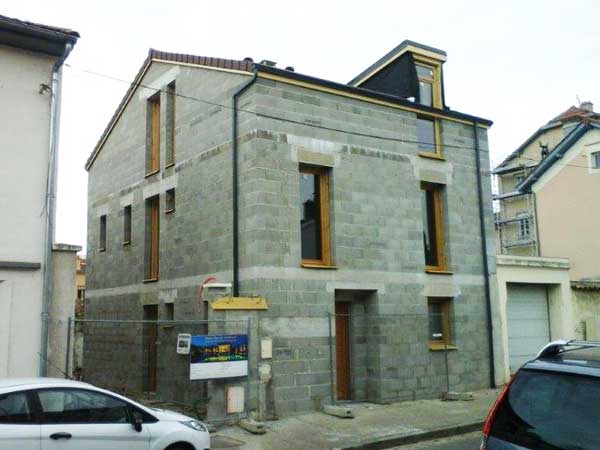
Interior fittings
Installation of partition of the rooms and insulating materials
The interior design and furnishings of this house aim at creating a warm space inside, which judiciously uses the volumes and the light.
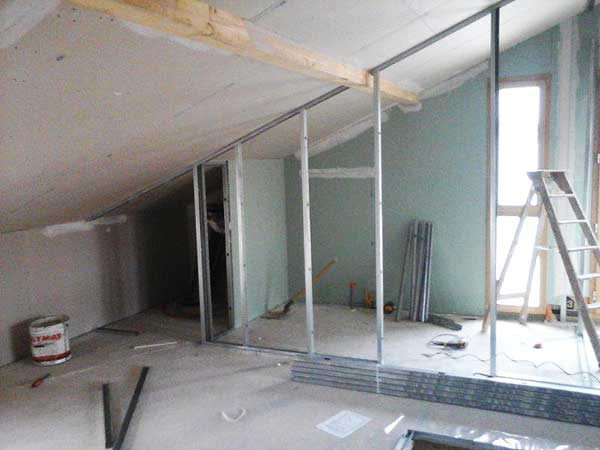
Electricity, plumbing, sanitation
Installation of electricity and telecommunications networks, hot and cold water and sewage disposal.
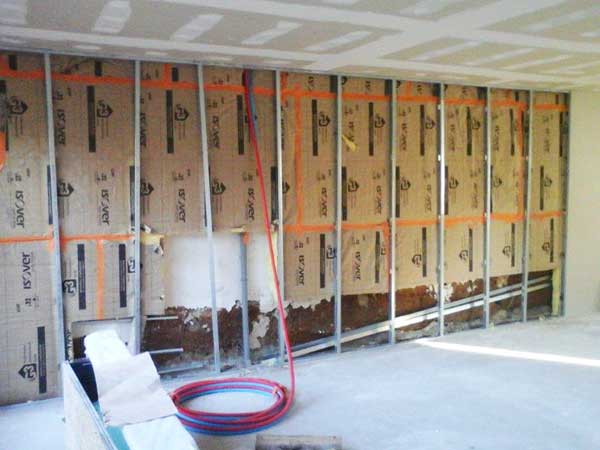
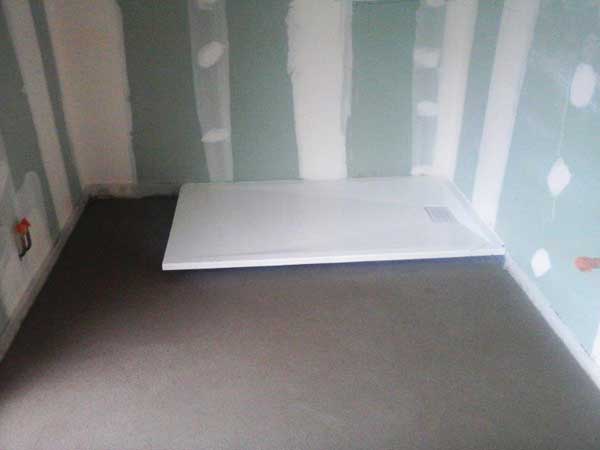
Flooring, painting, decoration, exterior coatings and locksmithing
Finishing of the interior and exterior of the house and installation of the last equipment. The choice of exterior cladding (plaster, stone, wood, etc.) is sometimes limited by urban planning rules, which vary according to the national, regional or local architecture.

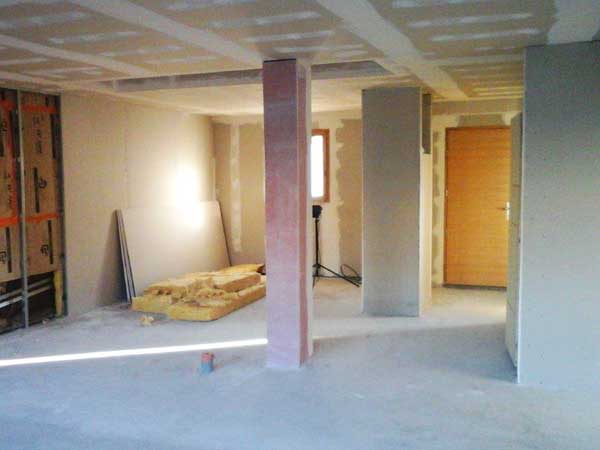

Finishes and fittings
Installation of shutters, painting and outside coatings, realization of the gardens, terraces, swimming pools, access roads…
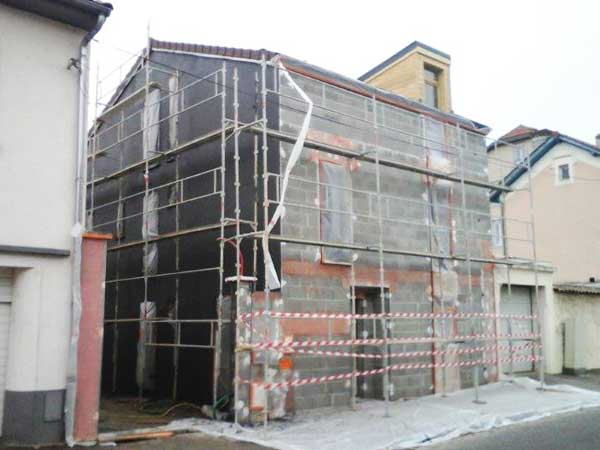
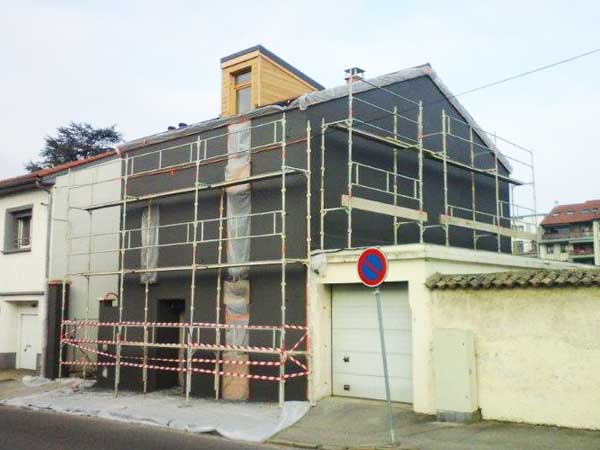
Completed construction
The finished house offers a natural and very contemporary appearance. Contrasting with the neighborhood but without denoting, its architecture enhances and invigorates the urban environment.
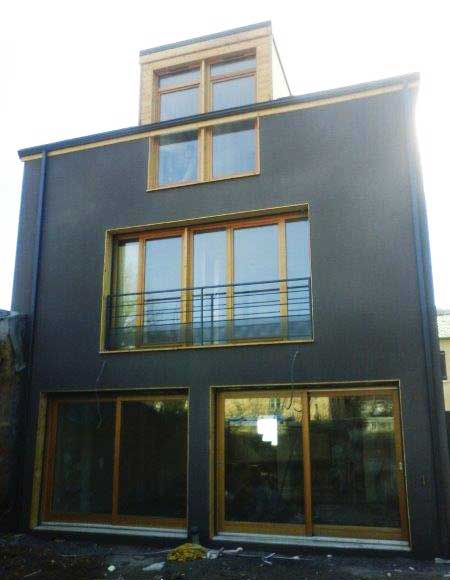
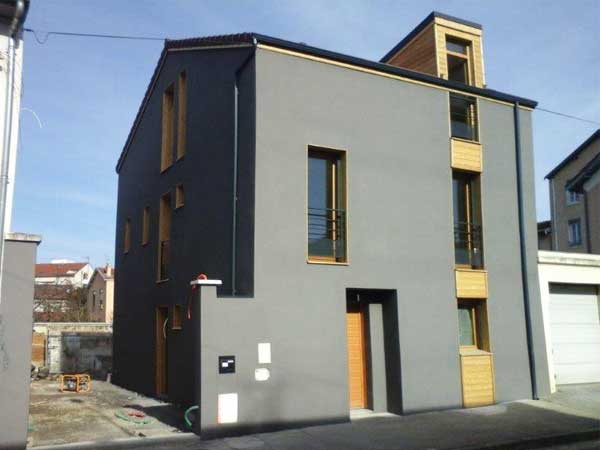
5. Reception of the works
At the completion of the works, a written report is recorded for the reception of the house with the assistance of the architect. The date of this report is the legal date of the beginning of the periods of the various guarantees for the works. Depending on the condition of the house at the reception, it can be accepted without reservation, in perfect condition, accepted with reservations, if certain defects are detected or refused. Though the process may differ between specific countries, it usually goes as follows.
If defects are noticed, the companies are obliged to repair them within the deadlines defined in their contracts in collaboration with the architect. Beyond that, contractors which fail to guarantee the full completion could then be held financially responsible for the completion of their lots by third parties.
The contractor’s works accounts are stopped and paid for by the project manager, possibly with deductions or late penalties, and a 5% deduction for the guarantee of one year for perfect completion. The remaining 5% is paid at the end of the year following the acceptance house, unless there is an opposition for failure by the companies.
The architect may carry out upgrades planned in the contract if the owner requires additional works or to account for a change in the price index defined in the contract.
In countries that specify legal guarantees, the date of receipt of the house is also used as the start date of the guarantee for equipment (usually for two years) that can be separated from the main structural works (doors, windows, shutters…) and the guarantee of the solidity of the structural works (usually for ten years).
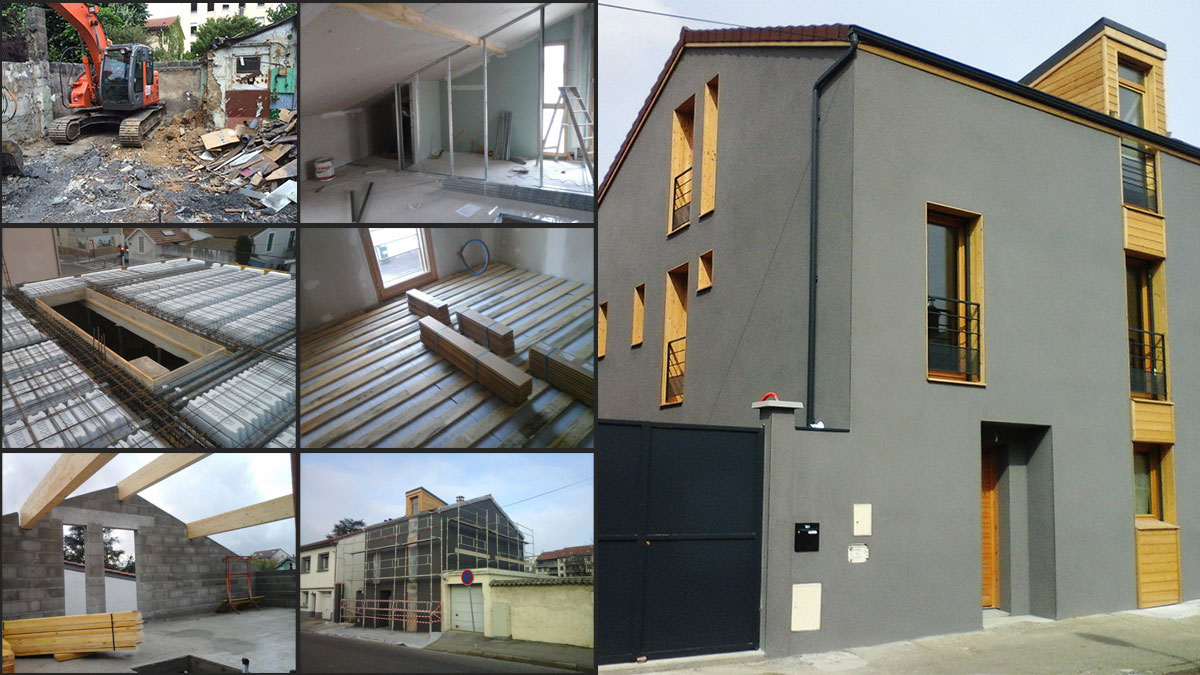
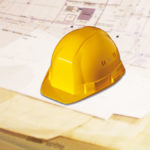



Thank you for all the steps of constructing a house. My husband and I have been thinking of building a home, but we don’t know what we have to do first. That is good to know that we must find a buildable land lot in order to start.